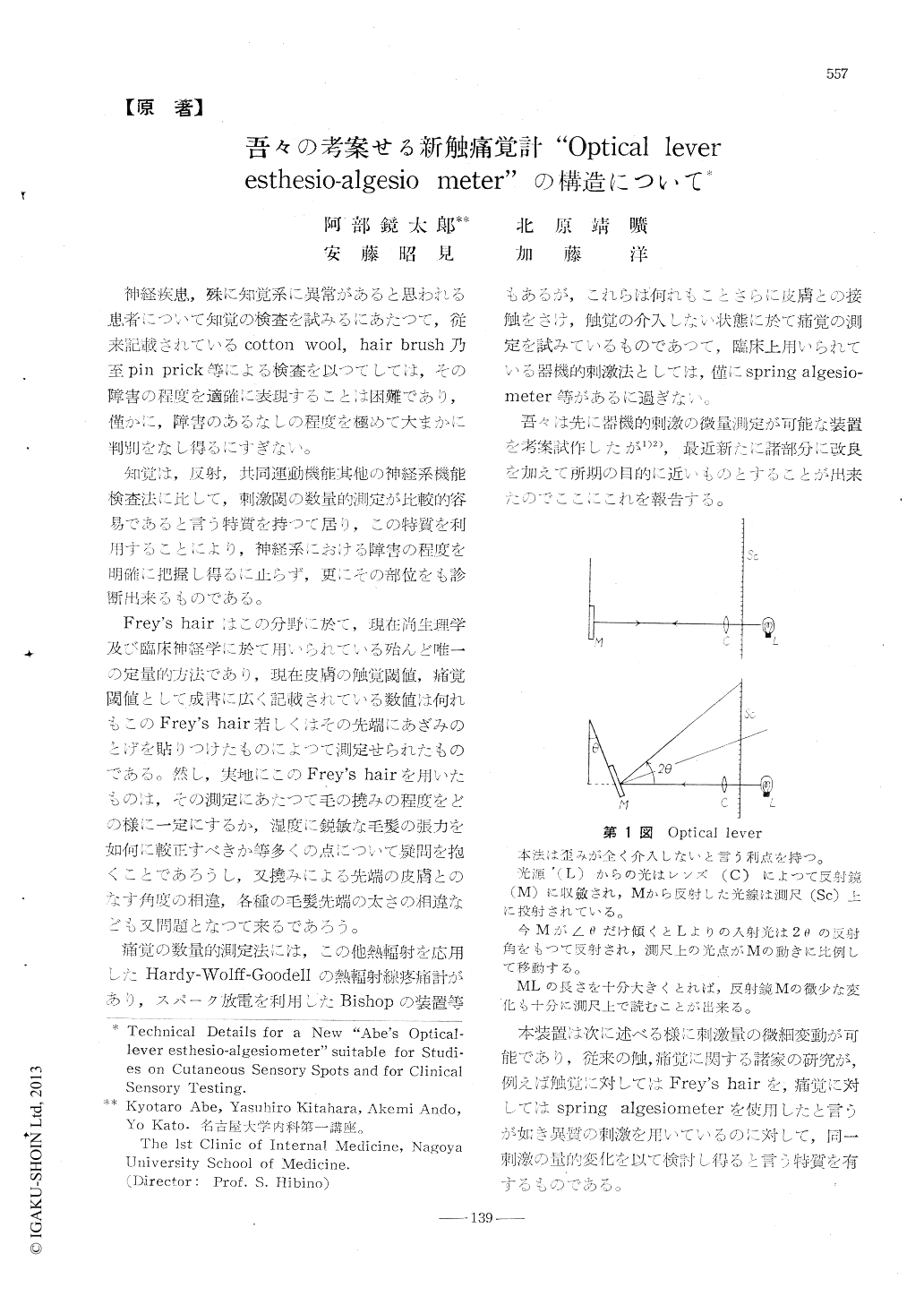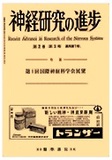Japanese
English
- 有料閲覧
- Abstract 文献概要
- 1ページ目 Look Inside
神経疾患,殊に知覚系に異常があると思われる患者について知覚の検査を試みるにあたつて,従来記載されているcotton wool, hair brush乃至pin prick等による検査を以つてしては,その障害の程度を適確に表現することは困難であり,僅かに,障害のあるなしの程度を極めて大まかに判別をなし得るにすぎない。
知覚は,反射,共同運動機能其他の神経系機能検査法に比して,刺激閾の数量的測定が比較的容易であると言う特質を持つて居り,この特質を利用することにより,神経系における障害の程度を明確に把握し得るに止らず,更にその部位をも診断出来るものである。
A new esthesio-algesiometer was devised,which permits the finest quantity of mecha-nical stimulation.
While most of the previous studies on thetactile and algesic sensations have been per-formed by means of qualitatively differentstimuli for respective sensations, such as v.Frey's hairs for touch and spring algesiometerfor pain, this esthesio-algesiometer providesstimuli of same quality permitting quantita-tive comparison between these two senses.
The apparatus (Fig. 5 & 6) consists of stand(solid in the scheme), stimulator with "para-llel laminae of Bartow" and optical leversystem.
The stimulator is a sewing needle attachedto one end of the spring lamina of the "paral-lel laminae" which is attached to a solid plate,on which a small mirror is settled for opticallever.
The optical lever system consists of lamp (L),mirror (M) (fixed on the plate), and scale(Sc), each attached to an arm (A), so that therelative position of these parts is constant des-pite any displacement of the arm.
The stimulator is attached to one end ofthe arm, which at the other end jointed withthe stand.
When the arm is depressed and the tip ofthe needle presses down the skin, the solidplate inclined with the mirror whereupon andthe light spot runs over the scale proportio-nally to the force applied to the tip of theneedle.
A "micro-stopper" (G) permits the repeatedstimulations of a given quantity.
Calibration was made by means of balance.The calibration curve of the force (Gm.)applied to the needle versus the deviation(cm.) of the light spot over the scal is linearaccording to the law of elasticity, and showspossibility of the stimulation of the finest qu-antity.
The quantity of stimuli are expressed interms of force (Gm.). Although effect ofstimulation is not dependent only upon theforce applied, but also upon the diameter,curvature or angle of the tip of the needle,and speed of application, selection of the nee-dle as same as possible in regard to size andform of the tip and relative constancy of speedof application of the stimulus obtained bytraining make this expression of quantity ofstimuli in force physiologically significant.
This apparatus satisfies most conditions ne-cessary to the esthesioalgesiometer, such ascontinuous variability and measurability offine quantity of stimuli, harmlessness to thesubject, portability, simplicity, & c., and isvery suitable for physiological study on cuta-neous sensory spots and for clinical sensorytesting.

Copyright © 1958, Igaku-Shoin Ltd. All rights reserved.


